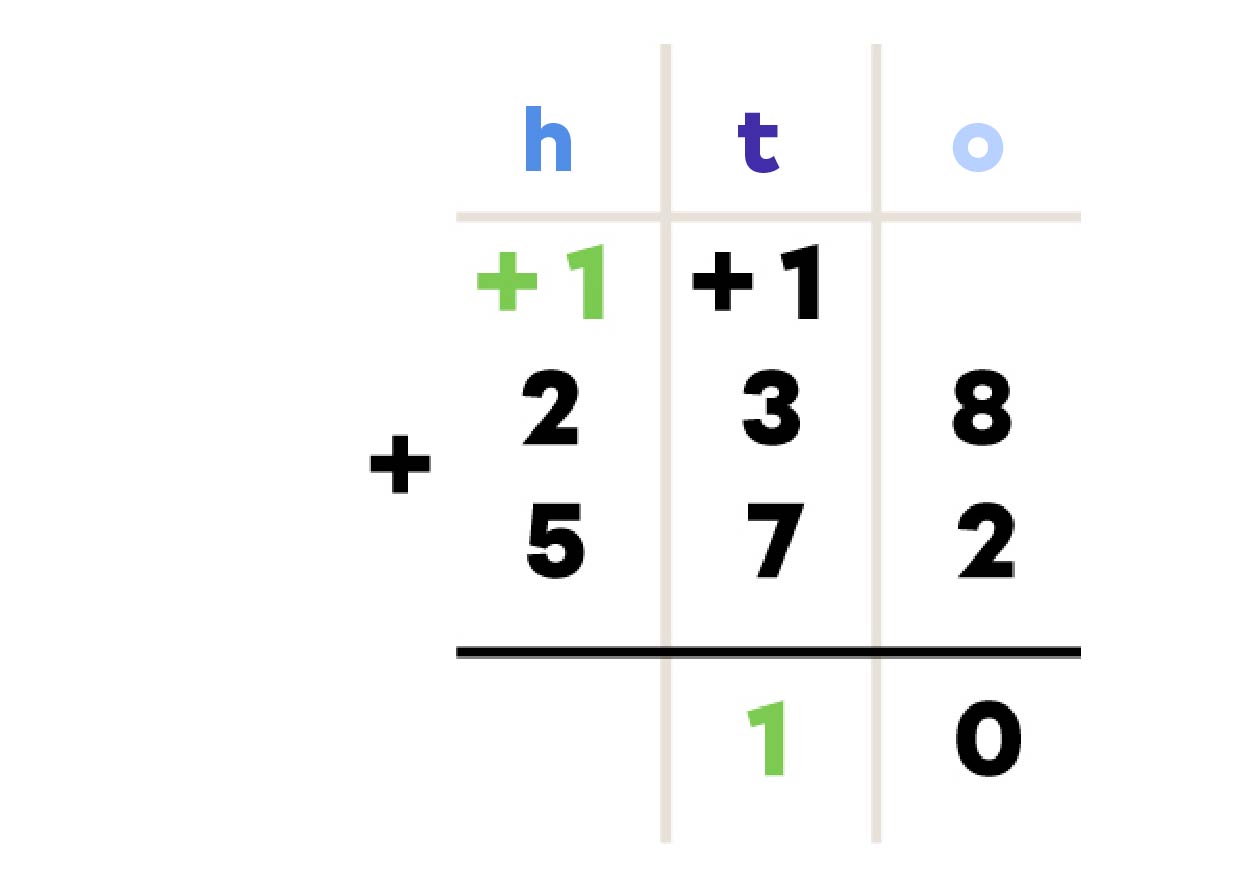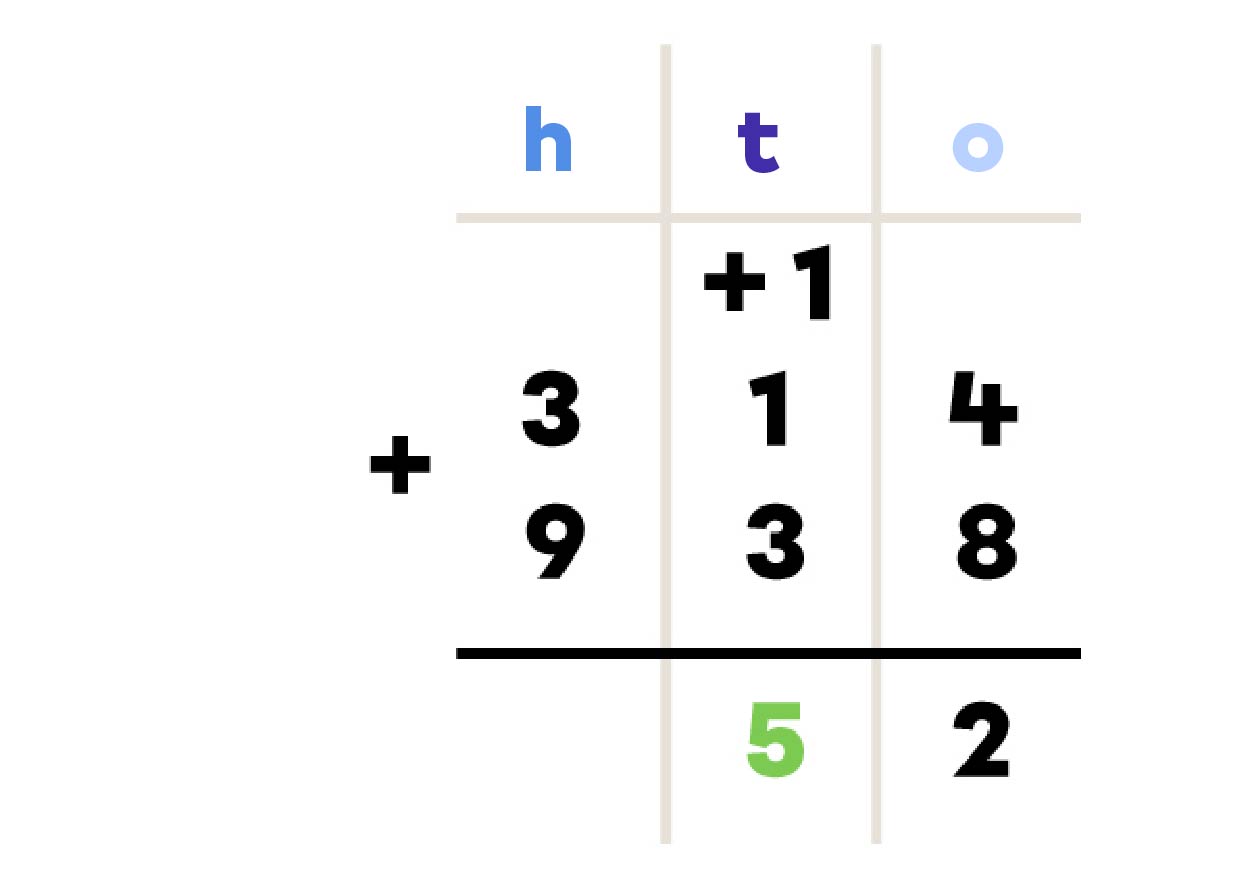Addition is the operation of adding one quantity to another.
In addition, the numbers added together are called addends. The result of an addition is called the sum.

To know what the + and = symbols mean, see the Lexicon of Mathematical Symbols concept sheet.
Many types of objects can be used to represent numbers. For example, you can use toy cars, tokens, and pencils to help you with your calculations.
4 + 3 = ?
I must add 3 balloons to 4 other balloons.

To find the total number of objects, I add the two quantities together.

I calculate 7 balloons in total.
36 + 25 = ?

|
 |
|
 |
36 + 25 = 61
Addition is the operation of adding one quantity to another.
In addition, the numbers added together are called addends. The result of an addition is called the sum.

To add numbers in columns, I have to follow these steps:
-
I write the numbers one below the other by lining up the digits according to their place value.
-
I add the ones and I write the ones digit of the sum below the line.
If there is a ten, I regroup it above the digit in the tens position. -
I repeat step 2 for all positions. I do not forget to add the regrouped amount if there is one.
238 + 572 = ?
|
 |
|
 |
|
  |
238 + 572 = 810
314 + 938 = ?
|
 |
|
 |
|
  |
314 + 938 = 1 252
Addition is the operation of adding one quantity to another.
In addition, the numbers added together are called addends. The result of an addition is called the sum.

To add numbers in columns, I have to follow these steps:
-
I write the numbers one below the other by lining up the digits according to their place value.
-
I add the ones and I write the ones digit of the sum below the line.
If there is a ten, I regroup it above the digit in the tens position. -
I repeat step 2 for all positions. I do not forget to add the regrouped amount if there is one.
238 + 572 = ?
|

|
|

|
|
 
|
238 + 572 = 810
314 + 938 = ?
|

|
|

|
|
 
|
314 + 938 = 1 252